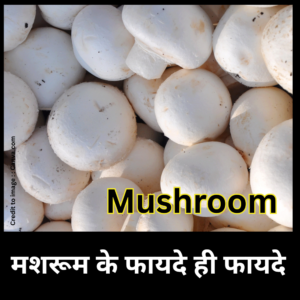The African elephant, Earth’s largest land mammal, holds deep ecological, cultural, and conservation significance. This article explores the different types of elephants, scientific facts about African elephants, and urgent conservation challenges. Framed in a curious Q&A format, it presents verified data tables and a human-centric tone. We also invite support for Prakriti Darshan Magazine through sponsorship, membership, or impact storytelling to amplify environmental awareness.
African Elephant: The Gentle Giant of Africa
What makes the African elephant different from other elephant species?
African elephants are distinguishable by their large ears shaped like the African continent, longer tusks, and greater size compared to their Asian relatives. Their strong social structure, high intelligence, and ecological role as ecosystem engineers make them unique.
Elephants are generally divided into three main types:
| Type | Scientific Name | Habitat | Key Features |
| African Savanna Elephant | Loxodonta africana | Grasslands, Savannas | Largest of all elephant species, large ears, curved tusks |
| African Forest Elephant | Loxodonta cyclotis | Dense tropical forests | Smaller size, straighter tusks, elusive behavior |
| Asian Elephant | Elephas maximus | Forests and grasslands in Asia | Smaller ears, domed head, less pronounced tusks |
Scientific Data Table of African Elephants
| Feature | Value |
| Average Height (Males) | 3.2–4 meters |
| Weight | 4,000–7,000 kg |
| Lifespan | Up to 60–70 years |
| Gestation Period | ~22 months |
Population and Conservation Table
| Region | Estimated Population (2024) | Status |
| Southern Africa | ~300,000 | Stable but under threat from poaching |
| Central Africa | ~100,000 | Declining due to habitat loss and conflict |
| West Africa | <15,000 | Critically Endangered |
African Elephant Diet and Ecology
| Diet Type | Primary Food Sources | Daily Intake |
| Herbivore | Grasses, leaves, bark, fruits | 150–300 kg/day |
Why African elephants are endangered ?
Despite their grandeur, African elephants face grave threats from illegal ivory trade, human-wildlife conflict, habitat fragmentation, and climate change. These stressors have reduced their numbers drastically over the past decades.
How do elephants contribute to ecosystem health?
Elephants act as keystone species by:
- Creating water holes during droughts
- Dispersing seeds through dung
- Clearing pathways in dense forests, supporting other wildlife
What can we learn from elephant behavior?
Elephants display emotions like grief, joy, and empathy. They remember water sources for years and communicate through low-frequency sounds that travel miles. Observing elephants helps scientists understand mammalian intelligence and social bonds.
Summary
African elephants are more than just wildlife—they are living heritage. By understanding their biology, behavior, and threats, we can contribute to their preservation. Educating ourselves and supporting conservation efforts is key to their survival.
Conclusion
The fate of the African elephant is important for health of our ecosystems. If we lose them, we lose a cornerstone of biodiversity. Now unified efforts can protect them.
Frequently Asked Questions (FAQs)
Q1: What are the two species of African elephants?
A1: The African Savanna Elephant and the African Forest Elephant.
Q2: How long do African elephants live?
A2: Typically 60 to 70 years in the wild.
Q3: Why are elephant tusks important?
A3: Tusks help in digging, stripping bark, and defense, but also make elephants targets for poachers.
Q4: Are African elephants danger ?
A4: Yes. Africal elephants are in danger . Due to poaching and habitat loss.
Q5: How much food does an African elephant eat daily?
A5: Between 150–300 kg of vegetation.
Q6: What is the gestation period for an African elephant?
A6: Around 22 months—the longest of any land mammal.
Q7: Can African elephants be domesticated?
A7: No, they are wild animals with complex needs not suited to captivity.
Q8: How do elephants communicate?
A8: Through trumpets, rumbling, body language, and seismic signals.
Q9: What role do elephants play in the food chain?
A9: As herbivores, they regulate plant growth and create access paths for other species.
Q10: How can I help save African elephants?
A10: Support eco-friendly tourism, donate to verified NGOs, and raise awareness.
Frequently Asked Questions (FAQs)
Q11: Which countries have the largest elephant populations?
A11: Botswana, Zimbabwe, and Tanzania.
Q12: Are African elephants social animals?
A12: Yes, especially females who live in matriarchal herds.
Q13: What are the major threats to African elephants?
A13: Poaching, habitat destruction, and human conflict.
Q14: Do elephants have good memory?
A14: Yes, they’re known for excellent long-term memory.
Q15: Are elephant numbers increasing?
A15: Some regions show stability, but overall, populations are still in decline.
References
- International Union for Conservation of Nature (IUCN)
- World Wildlife Fund (WWF)
- African Wildlife Foundation
- National Geographic – Elephant Conservation Reports
🌿 Support Prakriti Darshan – Nature and Environment Magazine
To continue publishing in-depth, awareness-driven content like this, Prakriti Darshan invites:
- Sponsorships from eco-friendly brands, NGOs, herbal and Ayurvedic product companies
- Advertisements promoting environmental, wildlife, and nature-based tourism
- Memberships to join a growing network of conscious readers
- Paid Impact Story Features showcasing transformative work by individuals or organizations
📧 Visit www.prakritidarshan.com or contact us to be part of the c
PRAKRITI DARSHAN-NATURE AND ENVIRONMENT MAGAZINE
Prakriti Darshan is a leading Hindi-language magazine and digital platform dedicated to raising public awareness on vital issues related to nature, biodiversity, climate change, sustainable development, and environmental conservation. This magazine represents a unique blend of science, society, and sensitivity—offering a common platform for researchers, students, NGOs, policymakers, nature lovers, and conscious citizens alike.
With thought-provoking articles, inspiring stories, environmental research, impactful projects, and policy perspectives, Prakriti Darshan is a transformative journey toward a greener and more sustainable future.
Let us come together to protect and preserve our planet for generations to come. 🌿🌍
Join us in our mission to protect and celebrate the planet. 🌏💚
Click for more information
- Visit www.prakritidarshan.com for Free Magazine ,Free membership benefits ,offered price magazine @ Rs.1 or Rs.11 only and more ……
- 🎗️Sponsor Prakriti Darshan Magazine – Support our environment mission.
- 📚 Explore the Environment Magazine – Read our latest and past issues.
- ✍️ Read Editor’s Article or Blog – Insightful thoughts from our editorial desk.
- 🌱 Join Membership – Be part of India’s leading green community.
- 🤝 Become an NGO Impact Story Partner – Share your grassroots impact nationwide.
- 🏢 Become a Company Partner – Showcase your CSR, ESG, or sustainability work.
- 👤 Become an Individual Partner – Volunteer, write, and raise your green voice.
- 📢 Advertise with Us – Reach eco-conscious readers across India.
- Eco Trails Newsletter
- Donate for “Hari Ho Vashundhara & Har school Hariyali “ Plantation campaign Associated Partner NGO :GDSS NGO www.gdssngo.org
BALA DATT SHARMA,
MANAGING EDITOR ,
PRAKRITI DARSHAN-NATURE AND ENVIRONMENT MAGAZINE
- Yamuna River- Lifeline of North India :A Scientific, Agricultural, and Environmental Perspective - July 14, 2025
- Jurassic World Rebirth Breaks Box Office Records : Global Box Office Revenue $1.5 Billion (And rising) Globally with a Roaring Environmental Message - July 14, 2025
- African Elephant: Facts, Types, Scientific Data, and Why Their Survival Matters for Our Planet - July 13, 2025







